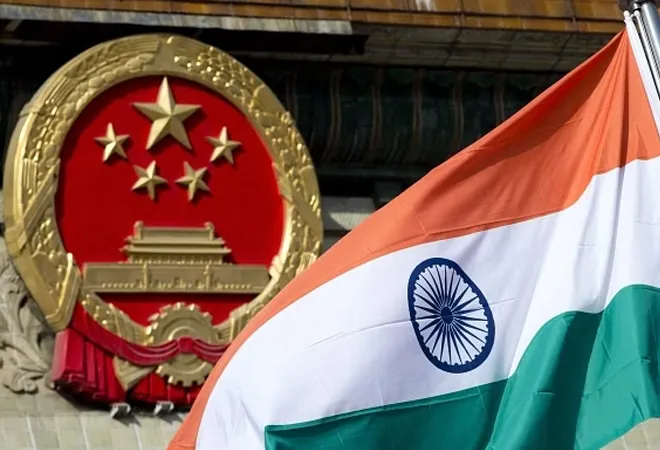-
CENTRES
Progammes & Centres
Location
A comprehensive strategy vis-á-vis China is instrumental for India to act as a bridge between the democratic camp and the Global South

As a key player in the development of the Indo-Pacific strategy, India has positioned itself as a significant partner of the United States (US) in countering China's influence in South Asia and beyond. While India and the US share many interests, differences in policy principles and implementation of measures to keep China in check, especially in the tech sector, have emerged.
The US introduced the CHIPS Act in August 2022 and additional restrictions on China in the semiconductor sector in October 2022, aiming to persuade like-minded countries to join in efforts to introduce their own China-related restrictions and jointly develop the next generation semiconductors. In January 2023, the US reached a deal with two significant partners in the chip sector, Japan and the Netherlands.Taiwan's TSMC has also been encouraged to move its production to the US.
However, if the US is to achieve a greater advantage over China, it must engage India more effectively. India has a thriving and dynamic tech ecosystem, including in the semiconductor sector, a highly skilled tech workforce, and a vast production infrastructure. Additionally, India can attract other countries in the region to join the cause, including nations that are not typically considered natural partners of the democratic camp. In March 2023, during a five-day visit to India by the US Secretary of Commerce, Gina Raimondo, the two countries signed a Memorandum of Understanding (MoU) to establish a semiconductor supply chain and innovation partnership, a significant step for India-US relations and an improvement of the technological dialogue between the countries.
India can attract other countries in the region to join the cause, including nations that are not typically considered natural partners of the democratic camp.
This positive development stands out against previous less successful attempts to synchronise policies and actions vis-à-vis China. A close examination of past decisions and policies of the Indian government towards China suggests a more reactionary approach, with a comprehensive strategy still a long way off. Examples include mandating the approval of the government for investments from neighbouring countries in April 2020, the requirement for citizens of border-sharing nations to obtain security clearance before being permitted to hold a company directorship in India in June 2022, and the banning of Chinese-owned app, TikTok, which had more than 200 million Indian users, in the same month. And in February 2023, India issued orders to block 232 apps and websites linked to China.
Although India was quicker than the US in countering China in some of these cases, overall, its decisions were the results of the military clashes with China and not part of a long-term strategy. As such, the impact of these measures has been mixed. While Chinese investments are no longer welcome in India, especially as long as the two countries continue toengage in military confrontations, the steps taken did not disrupt bilateral trade, which stood at US$136 billion in 2022, 8.4 percent higher than in 2021.
Trade with China clearly remains important for the Indian economy and generally should be encouraged, but at the same time, it needs to be directed to sectors of Indian interest. India needs to find the right balance between security considerations and an open economy, underscoring the need for a comprehensive strategy to deal with China.
To enable a more strategic and systematic approach, India should overhaul its outdated “two-track” investments review mechanism, and establish a robust Foreign Investment Screening Mechanism that will focus on India’s strategic interests, sensitive technologies, and crucial infrastructure. Although the suggested mechanism might resemble the American CIFIUS, it should not be a case of “copy and paste”, nor aimed against any country, but rather set clear and equal criteria for all foreign investors.
The Union government needs to assemble a designated cross-ministerial review team that will share information on a regular basis and discuss investment proposals with a risk potential to India's economy and national security.
Taking into consideration the vast governmental work that still needs to be done before such a mechanism is fully active, the Indian government should consider several intermediate steps. These include: increasing the awareness of all government levels and the private sector of various threats, such as espionage, foreign influence, IP theft, and access to sensitive data by foreign entities. The Union government needs to assemble a designated cross-ministerial review team that will share information on a regular basis and discuss investment proposals with a risk potential to India's economy and national security. Relevant information should not stop at the federal level but also flow to the states and vice versa, bottom up. The team will provide assessments and recommendations concerning significant investment proposals based on clear definitions of strategic interests, assets, sectors, and technologies. By meeting regularly, this team could create a national database on foreign investments, complementing existing regulators' concerns of national security and enable a deeper analysis of investments by sectors and states. Furthermore, it is crucial for the Indian government to address the bottleneck in the current “government route” of investments. By prioritising sensitive emerging technologies, strategic assets, and specific sectors, the government can reduce the workload and cut down on red tape, leading to better capital flow in the market.
Influencing the Global South
The importance of these adjustments goes beyond the mere protection of India’s sensitive tech and infrastructure as they could also impact India’s regional and global projection of power. As China extends its influence in the Global South, mainly via investments and loans, India needs to rise to the challenge and establish itself as a leader and a bridge between the democratic camp and the Global South; a comprehensive strategy vis-á-vis China could be instrumental in positioning itself as such.
Many of the Global South countries suffered tremendously as a result of the intensifying great power competition, the Russia-Ukraine conflict and the general division in global politics. Most of them are not interested in choosing sides and seek ways to improve their economies. China is exploiting this by offering them“no-strings-attached” aid.
Nonetheless, Bangladesh, a rapidly growing economy, which is developing several strategic national infrastructure projects, is far from being dependent on China, and was able to attract funding from other resources such as Japan.
China is already the biggest foreign financier of Sri Lanka, with significant influence also at the political and security levels. The Hambantota lease of 99 years demonstrates the asymmetric relations China has with Global South countries. However, this did not stop Sri Lanka from finalising a similar deal with China regarding the the Colombo port—the largest logistics complex in South Asia. Recently, China also revived the pretentious railway project connecting Xinjiang to Gwadar port valued at US$58 billion. Nepal has also become a target of Chinese investments in an attempt to assert China’s influence on Tibet and counter India’s engagement with Nepal. Chia has also zeroed in on Bangladesh. China provided the latter with loans for several infrastructure projects, and lately, it was reported that Bangladesh will use Yuan to pay Russia for a nuclear plant. Nonetheless, Bangladesh, a rapidly growing economy, which is developing several strategic national infrastructure projects, is far from being dependent on China, and was able to attract funding from other resources such as Japan.
In these economic and geostrategic realities, expecting the Global South to limit China’s access to infrastructure projects or to block Chinese investments is unrealistic. Instead, India can offer these countries an alternative to the all-or-nothing approach of the US or the economic heavy-handed approach of China.
As India’s influence continues to grow, it should adopt a more balanced and pragmatic approach, advancing cooperation that is based on mutual interests. It should also be able to attract other Indo-Pacific partners for joint projects to the benefit of the Global South. New cross-regional groupings such as the I2U2—a grouping of India, Israel, the United Arab Emirates, and the US—can provide a template for India’s role as a connector and a pivot between regions. The US should welcome and support such a leadership role for India in the Global South and beyond. An active and independent India can play an important role in a rapidly changing global landscape.
Joseph Rozen is an expert in International Relations, Asian affairs, and National Security. He was the director for APAC and Euro-Asia affairs at the Israeli National Security Council
The views expressed above belong to the author(s). ORF research and analyses now available on Telegram! Click here to access our curated content — blogs, longforms and interviews.

Joseph Rozen is an expert in International Relations Asian affairs and National Security. He was the director for APAC and Euro-Asia affairs at the Israeli ...
Read More +